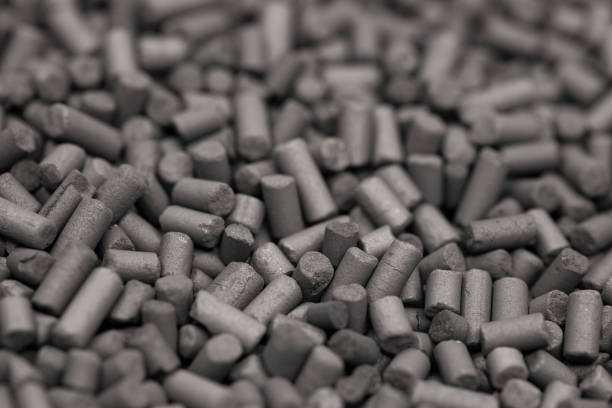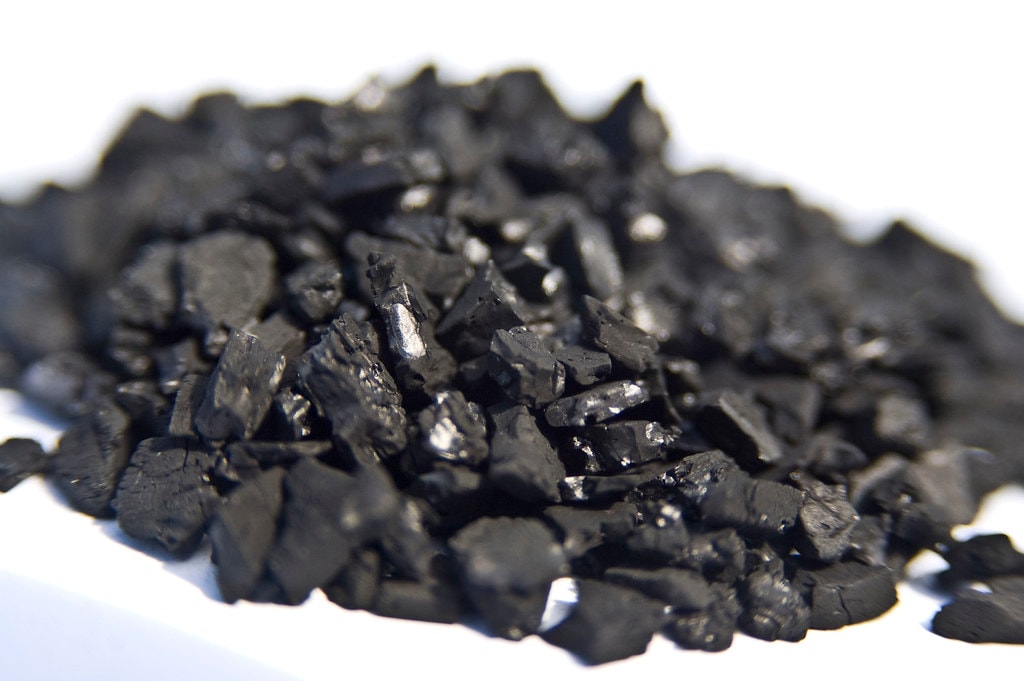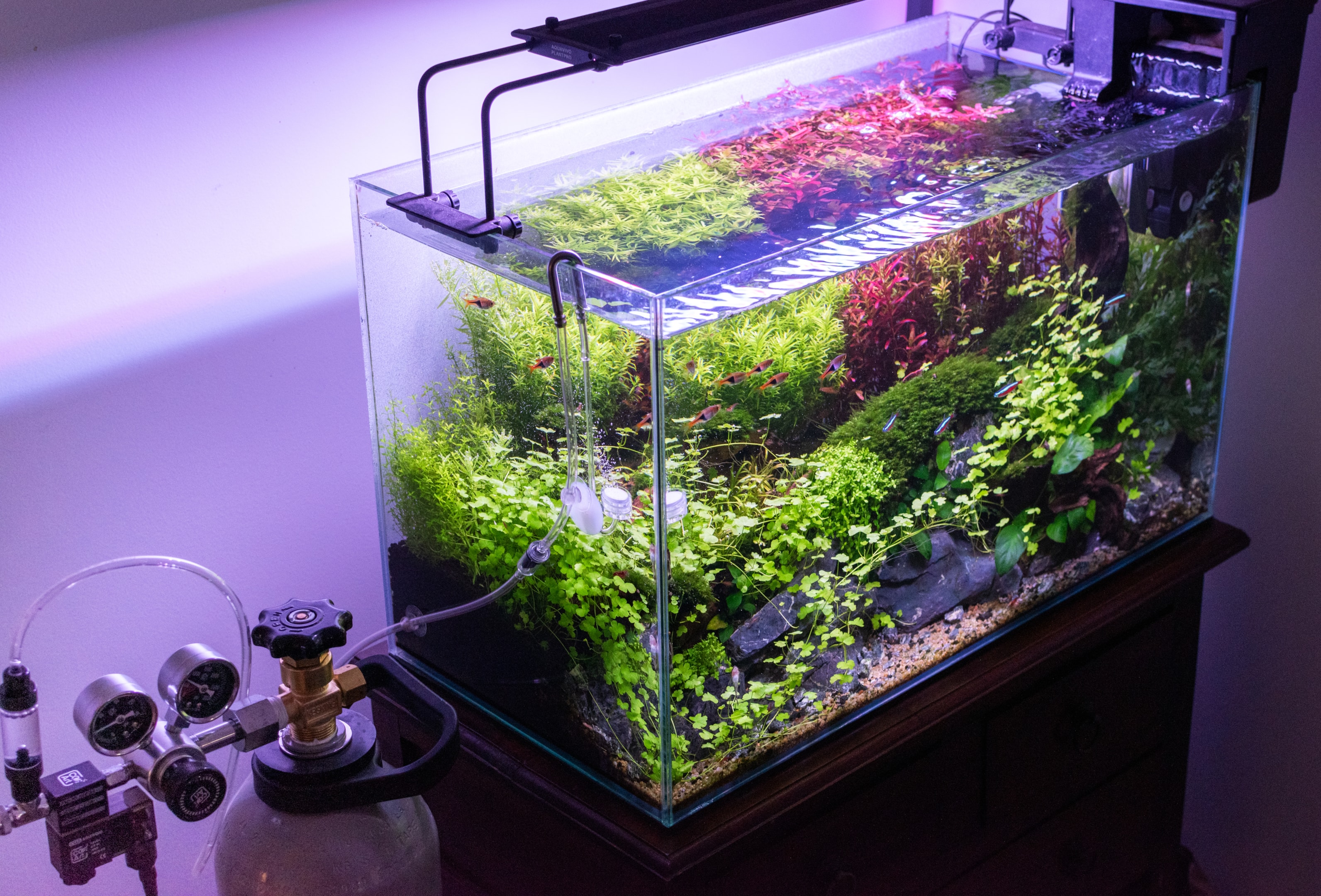How important is activated carbon in your aquarium?
Introduction: Understanding Activated Carbon
Activated carbon is a powerful filtration medium that plays a crucial role in maintaining the health of your aquarium. It’s commonly used to improve water quality by adsorbing impurities such as toxins, odors, and discoloration. Activated carbon aquarium filtration is a popular choice because it provides a simple yet effective solution to keep your aquarium water clear and free from harmful chemicals.
For aquarium owners, understanding the role of activated carbon is vital. Whether you’re setting up a freshwater tank or a saltwater reef, knowing how activated carbon works can make a significant difference. So, if you find yourself wondering, do I need carbon in my aquarium filter, the answer depends on the type of fish and plants you have, as well as your filtration needs.

What Does Activated Carbon Do in an Aquarium?
Aquarium activated carbon functions by adsorbing unwanted chemicals and particles from the water. As water passes through the porous surface of the carbon, toxins and impurities are trapped in the tiny pores. This process is known as adsorption, where contaminants stick to the surface of the carbon, leaving the water cleaner and clearer.
By removing harmful substances such as chlorine, chloramines, heavy metals, and organic compounds, activated carbon helps create a more stable and healthier environment for your aquatic life. It also improves the appearance of the water, preventing any unpleasant smells or discoloration, which is essential for both fish and plant health.
Types of Activated Carbon Available for Aquariums
When it comes to choosing the right type of activated carbon for your aquarium, it’s important to understand the different forms available. There are generally three types: granular, pelletised, and powdered. Each has its own unique characteristics suited for specific filtration setups.
Granular activated carbon is one of the most popular choices, offering a good balance between surface area and flow rate. If you’re wondering about how to put activated carbon in aquarium filters, granular carbon can be easily placed in a mesh bag and inserted into your filter. For those looking for efficient adsorption, best activated carbon for aquarium use often comes down to the one that best fits your tank size and filtration system.

Benefits of Using Activated Carbon in Your Aquarium
One of the main benefits of using activated carbon in your aquarium is its ability to remove harmful chemicals from the water. This helps prevent the buildup of toxins that can negatively affect fish, invertebrates, and plants. Activated carbon is especially beneficial in tanks with sensitive species, as it helps ensure water quality remains optimal.
Another advantage is its ability to improve water clarity and remove odors. Whether you're trying to clear up cloudy water or eliminate organic waste, activated carbon can help your tank maintain a pristine and healthy environment. The removal of discoloration caused by dissolved organic compounds also contributes to the aesthetic appeal of your aquarium.
Does Activated Carbon Remove Essential Nutrients?
While activated carbon is excellent at removing impurities and toxins, it's important to consider its impact on the overall water chemistry of your aquarium. Activated carbon is highly effective at removing harmful substances like chlorine, chloramines, and organic compounds, but it can also strip some essential nutrients from the water. This includes trace elements and minerals that are beneficial for your fish and plants.
For those managing a planted tank, the removal of beneficial nutrients may affect plant growth if overused. Aquarium activated carbon can inadvertently strip vital elements like iron and calcium, which are crucial for plant health. To avoid this, it's important to strike a balance in your carbon utilization, ensuring that the carbon does not remove too much of the beneficial substances that your plants need for healthy growth. Therefore, it’s essential to monitor the water and ensure that biological filtration and other filter media are supporting the balance.
How Often Should Activated Carbon Be Replaced?
One of the key factors in maintaining optimal water quality in your aquarium is ensuring that your activated carbon is regularly replaced. Over time, granular activated carbon becomes saturated with impurities, reducing its effectiveness in filtering out toxins. If you neglect to replace it, the carbon can actually begin to release trapped chemicals back into the water, potentially causing issues like an ammonia spike or poor water quality.
As a general rule, it’s recommended to replace activated charcoal every 3 to 4 weeks, but this can vary depending on your aquarium setup. If your filter system is heavily used or your aquarium water is more polluted, you may need to change the carbon more frequently. For mechanical filtration and chemical filtration, replacing the carbon ensures that your carbon filter continues to perform optimally and helps to remove ammonia and other toxins from your tank. Regular replacement helps to maintain the proper water chemistry and supports the beneficial bacteria needed for natural filtration.

Activated Carbon and Fish Health: Impact on the Livestock
Activated carbon plays a vital role in maintaining the overall health of your fish tank by improving water quality. By removing ammonia, heavy metals, and harmful organic compounds, it helps to create a stable and safe environment for your aquatic life. When carbon is used properly, it can help reduce the risk of diseases and stress in fish, as poor water quality is often a contributing factor to weakened immune systems.
However, if left in your filter system for too long, activated charcoal can become saturated, and its ability to remove ammonia and other toxins diminishes. This can lead to a buildup of harmful substances in the tank, putting your fish at risk. In particular, high levels of ammonia and nitrates can cause toxicity, affecting fish health and potentially leading to fish death. Regularly replacing your carbon filter and ensuring proper biological filtration will help protect your fish and maintain a healthy aquarium water environment.
The Role of Activated Carbon in Controlling Algae Growth
One of the lesser-known benefits of activated carbon is its ability to help control algae growth in your aquarium. Algae blooms are often caused by an excess of organic material or nutrients in the water, such as nitrates and phosphates. Aquarium activated carbon helps by removing ammonia, excess organic compounds, and other pollutants, which can contribute to excessive algae growth. By reducing these nutrients, carbon can effectively limit the conditions that promote algae growth.
In addition to removing ammonia, granular activated carbon also absorbs dissolved organic carbon, which algae can use as a food source. This helps create a more balanced environment in your fish tank. However, carbon alone won’t completely eliminate algae; it's essential to consider other factors like proper lighting, biological filtration, and water changes. Still, activated carbon remains a helpful tool in maintaining clean and clear aquarium water and preventing algae growth.

Activated Carbon vs. CO2 Injections in Planted Aquariums
In a planted tank, both activated carbon and CO2 injections play important roles, but they serve different functions. Activated carbon primarily helps in chemical filtration, removing toxins, impurities, and excess nutrients like ammonia and nitrates that can negatively affect both fish and plants. By keeping the water clear of organic debris and pollutants, carbon ensures that your plants have a clean environment to grow in.
On the other hand, CO2 injections are essential for plant growth. Plants rely on CO2 for photosynthesis, and without sufficient CO2 levels, your plants may struggle to thrive. While activated carbon can help to remove ammonia and other harmful substances, it does not directly contribute to plant growth. When deciding between activated carbon and CO2, it’s important to remember that they complement each other—activated charcoal keeps the aquarium clean, while CO2 injections boost plant health. Both elements are key to maintaining a thriving planted tank.

Can Activated Carbon Be Used in Freshwater vs. Saltwater Aquariums?
Activated carbon is versatile and can be used in both freshwater and saltwater aquariums, but there are some differences in how it functions in each environment. In freshwater tanks, granular activated carbon is often used to remove dissolved organic compounds, excess nutrients, and pollutants from the water, helping to keep the aquarium clear and healthy. Activated carbon can also help prevent ammonia spikes that may harm fish and plants in freshwater setups.
In saltwater aquariums, activated charcoal serves a similar purpose but is particularly useful in reef tanks where maintaining clear water is crucial. Aquarium activated carbon can help remove ammonia, nitrate levels, and other toxins that may build up from excess feeding or decaying organic material. However, in saltwater aquariums, activated carbon is often used in conjunction with protein skimmers and biological filtration systems to maintain water quality. Both environments benefit from regular maintenance, but saltwater tanks may require more specialized carbon filtration methods due to the delicate nature of reef ecosystems.
Alternatives to Activated Carbon for Aquarium Filtration
While activated carbon is highly effective in removing toxins, some aquarium owners prefer alternatives for filtration, depending on their specific needs. One popular alternative is mechanical filtration, which physically removes debris and particulate matter from the water. This type of filtration doesn't remove chemicals but helps keep the water clear by trapping solids in a filter media.
Another alternative is biological filtration, which uses beneficial bacteria to break down harmful substances like ammonia and nitrites into less toxic compounds. Although activated carbon is a great tool for chemical filtration, biological filtration is essential for establishing a healthy nitrogen cycle in your tank. Granular activated carbon may be used alongside these other methods, but sometimes hobbyists prefer filter media that focus on a specific filtration type. For those seeking a more natural approach, some use powdered carbon combined with other media to maintain a balanced aquarium ecosystem.
How to Properly Use Activated Carbon in Your Aquarium
To ensure that activated carbon works effectively in your aquarium, it’s essential to use it properly. First, ensure you are using the best activated carbon for aquarium use, which is typically granular activated carbon for larger tanks or activated charcoal in mesh bags for smaller setups. Placement is crucial: the carbon should be positioned where the water flows through it, usually in your filter chamber or filtration media compartment.
It’s important not to overuse activated carbon. Using it for too long can lead to saturation, at which point it will start to remove ammonia and other beneficial substances from the water, causing an imbalance. To maximize its effectiveness, replace carbon filters regularly—every 3 to 4 weeks for most tanks. Monitoring your aquarium water and the health of your livestock will help you determine when to change the carbon. When properly utilized, activated carbon can help remove ammonia, improve water quality, and prevent excess nitrate levels from harming your fish and plants.
Conclusion: Should You Use Activated Carbon in Your Aquarium?
When considering whether or not to use activated carbon in your aquarium, it’s important to weigh its benefits and potential downsides. Activated charcoal is highly effective at removing ammonia, toxins, and excess nutrients from the water, creating a cleaner and healthier environment for your fish and plants. For most aquariums, especially those with sensitive species, aquarium activated carbon can help maintain stable water conditions and improve water clarity.
However, activated carbon is not without its limitations. It can also remove essential trace elements and beneficial bacteria needed for proper biological filtration. For those wondering, how important is activated carbon in your aquarium, it depends on your tank’s specific needs. If you are running a heavily stocked tank or have issues with cloudy water or toxins, using activated carbon can be invaluable. But, as with all filtration media, it’s important to regularly monitor your tank’s water parameters and replace your carbon filter to prevent any adverse effects. Whether you choose to use activated carbon or opt for alternatives, maintaining a proper balance of filtration methods will ensure the long-term health of your fish tank.
Any questions? Our Support Team is always ready to answer them! Contact us directly via support@co2art.us!




